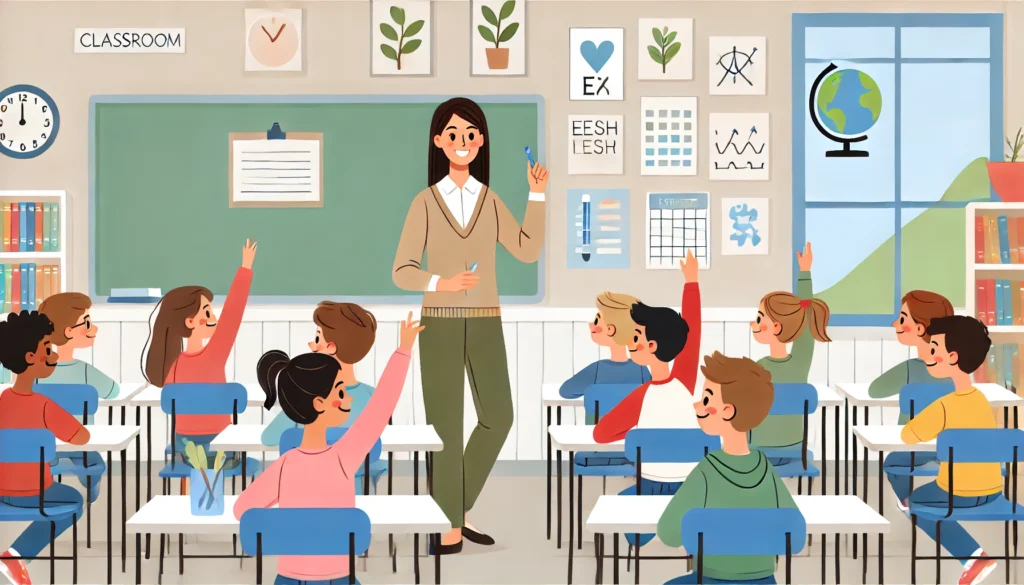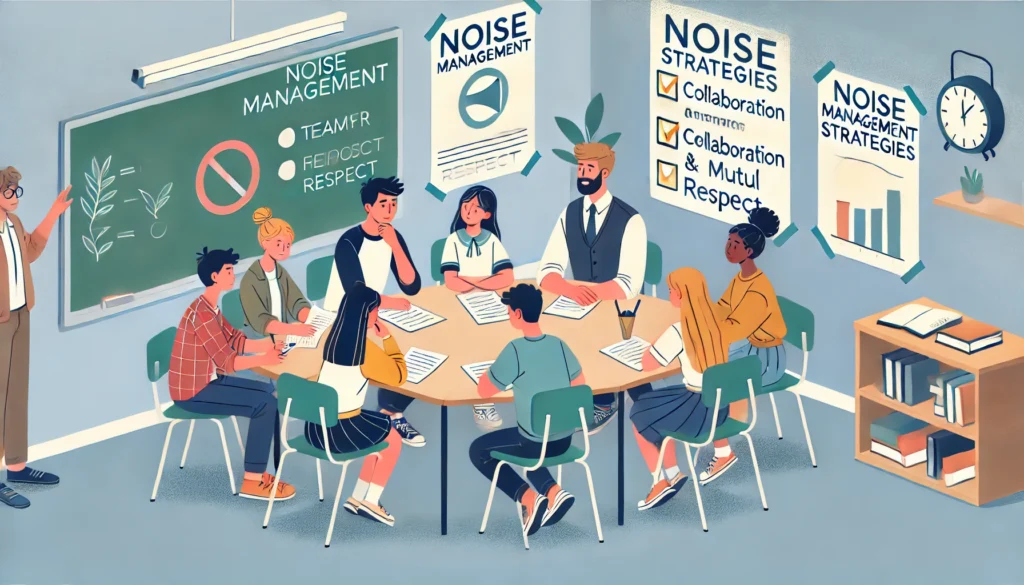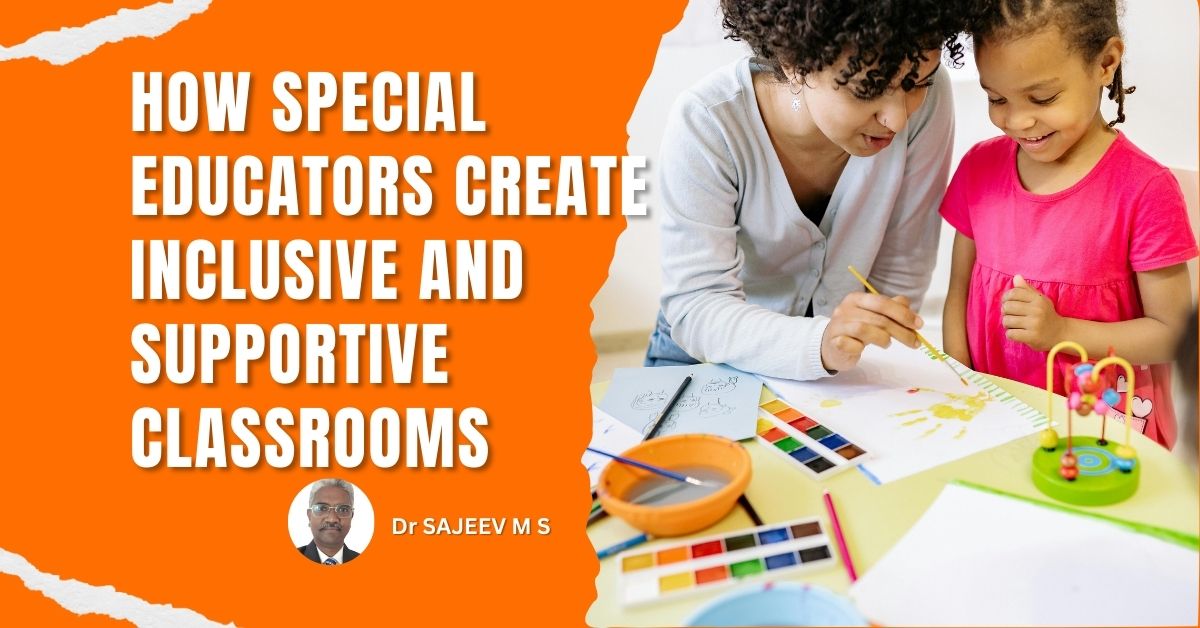Teaching in a noisy classroom is a challenging task for teachers as it causes interference in learning and low engagement among students. To control the noise level in the classroom, teachers must use several strategies to establish clear expectations, implement effective management techniques, create a positive learning environment, utilize technology, and collaborate with students. By actively taking care of noise-related problems with structured approaches, teachers can help create a harmonious and productive classroom environment conducive to optimal learning outcomes. The following are the tips for teachers on how to control a noisy classroom.
1. Setting clear guidelines for behaviour
To manage a noisy classroom effectively, it’s crucial to set clear guidelines for behaviour. Communicate your expectations to students regarding noise levels, listening when others are talking, and following classroom rules. Consistency is key—make sure students understand the consequences of not adhering to these guidelines.
2. Establishing consistent routines for transitions
Anticipatory transitions can reduce disturbance and noise in the classroom. Establish predictable patterns for transitions, including the use of visual cues or other signals when transitioning from one activity to another. Your students will be better able to prepare for transitions and then focus if they are predictable.

3. Applying nonverbal cues and proximity control
Nonverbal cues can be a very vital tool in noise management in the classroom. Gestures, facial expressions, and eye contact can tell the students when they should keep quiet or refocus. Proximity control approaching a noisy student can also be effective in refocusing the attention of an entire class when necessary.
4. Positive reinforcement strategies
Positive reinforcement can make a difference in managing a noisy classroom. Praise the students for their good behaviour and following expectations, and consider a reward system to further motivate them. Focus on the positive, and you will have a quieter, more cooperative classroom.
5. Interactive and hands-on activities
The instructor engages students in interactive and hands-on activities so that the student’s energy will be channelled into an activity that would minimize noise. Some examples include group projects, games, and experiments requiring participation. As soon as the students are busy, the class becomes focused and less noisy.
6. Setting up a community and mutual respect among students
This provides a sense of community and respect, which makes the classroom a place of serenity. Positive teamwork, collaboration, and empathy among little children produce conducive performances. The students are liable to be positive when they are treated by other students as someone worth valuing and, therefore, create a quiet classroom environment.

7. Use of educational applications and interactive whiteboards
Technology can be used as a strategic tool in class to manage noise. Incorporate learning apps and interactive whiteboards, making lessons appealing and interactive that attract the learners’ attention. This way, by using technology, you offer them dynamic experiences while learning, which keeps them alert and motivated to learn.
8. Creating audio-visual learning experiences to captivate students
Engage the students with audio-visual aids and minimize the noise. Explain the content using videos, animations, or multimedia presentations. This can be highly effective by making use of visual and audio stimuli to hold the attention of the student, which further results in an attentive and relatively quieter classroom environment.
9. Collaborating with students to address noise-related issues
It is just like handling a noisy class—trying to head a chorus of noisy parrots. And, surprisingly enough, all that noise can be controlled with a mix of one’s team members—yes, students too! Right, it is—harnessed all chaos as the collaborative problem-solving magic!
10. Engaging students in dialogue about the impact of noise on learning
Assemble your army, that is, the students, to discuss the deafening effects of noise pollution within the hallowed halls of education. Explain that too much noise can make one have a challenging to concentrate or understand instructions to keep one’s marbles intact in class.
11. Involving students in brainstorming solutions to minimize distractions
Now, let’s get those young creative minds working at it—and trust me, they are so wackier and more brilliant than you think. Ask your students to come up with ideas on how to turn down the volume without cramping anyone’s style. Ideas would range from a noiseless hand signal system to a specifically designated “silent zone,” with the possibilities equaling an endless voracity of memes by a group of teenagers.
Conclusion
All these noise management strategies will, therefore, make it possible for teachers to produce a learning environment that is ideal for student’s academic and behavioural success. There will be clarity in expectations, effective management skills, interesting activities, technological applications, and teamwork in solving problems, which might empower the children to take care of their behaviours and, as such, contribute to the harmonious nature of the class. Finally, through noise management strategies, educators will find out how they improve education quality both for themselves and their students.
You may like to read:-
AI in Education in 2025: Insights, Applications, and Opportunities
The Global Teacher Shortage Crisis and How to Solve it: UNESCO Report



